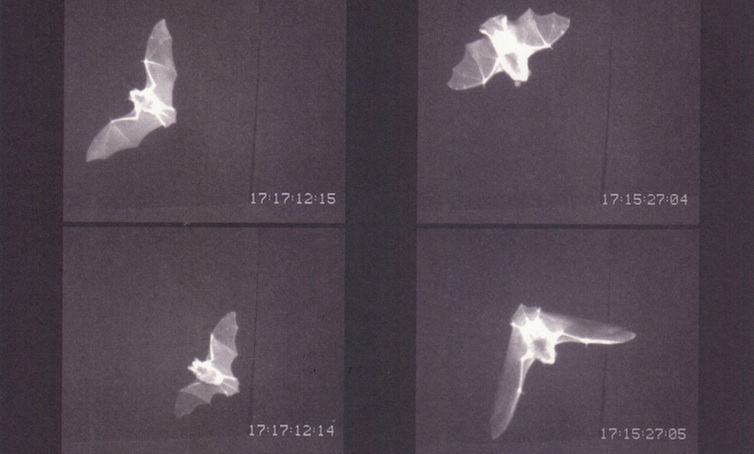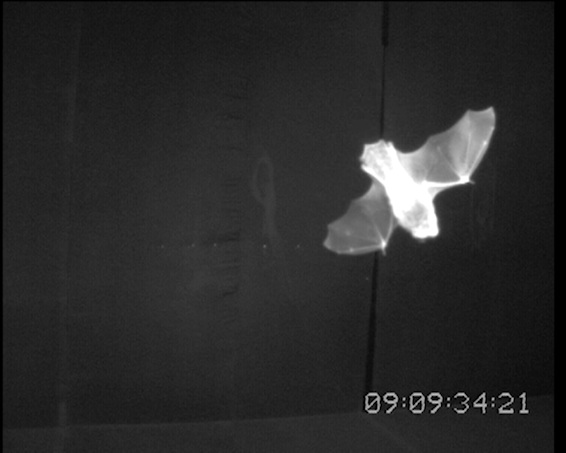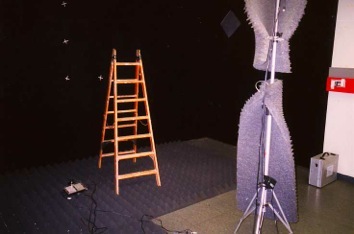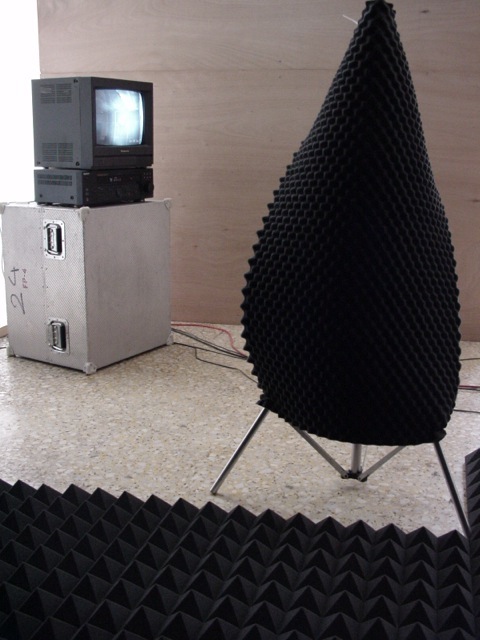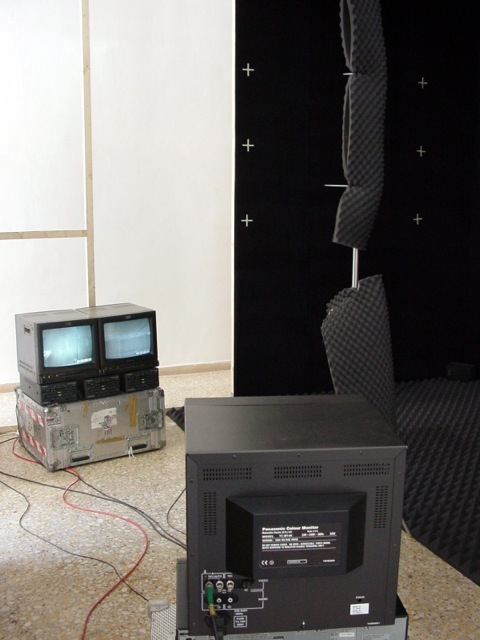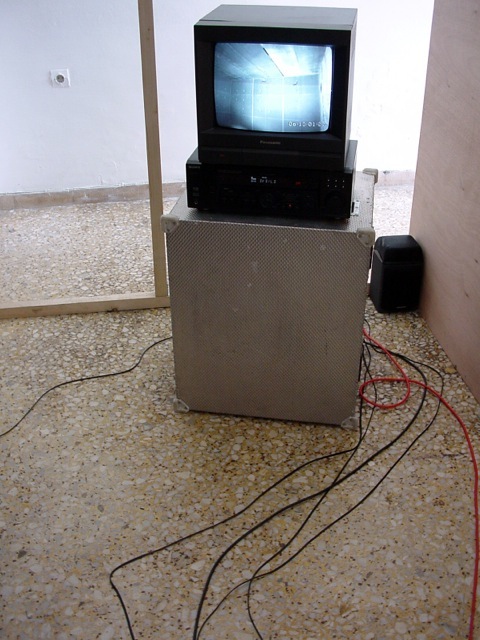Henrik Håkansson
The Batlab Session
April 22, 2004–June 30, 2004The Breeder, Athens
Henrik Håkansson (Helsingborg, 1968) investigates the relationship between people, animals, insects and plants, and various forms of science. He does so by taking the role of a biologist and discoverer. His approach springs from a fascination for biological structures. Through his observations, he aims to close the gap with nature and to make the viewer receptive to natural processes.
For his first solo show at The Breeder, Håkansson will present 2 new works: Midnight at Noon and Living after Midnight`, along with a series of photographs from those projects.
The Batlab Session
Midnight at Noon
June 26, 2002 (Myotis nattereri)
The work is based on a flight session with four Myotis natterei bats taking place in the room dedicated as the Batlab at the department of Animal physiology in Tübingen.
The work is stated as a document of time and space represented in the audiovisual contents of flight patterns and the echolocation signals emitted by the bats. The physical representation of the lab structure is represented in form based on images, personal remembrance and reception of the Batlab. The films are obtained from 3 B/W Cctv cameras connected to a custom developed IR strobe light system and ultra sonic detectors and then slowed down in speed with the idea to extend the vision of this moment taking place in the morning of June 26, 2002.
The work was made in collaboration with Andrea Schaub, and Ingrid Kaipf under the supervision of Dr. Björn M, Siemers and Professor Dr. Hans –Ulrich Schnitzler of the department of Tierphysiologie at the University of Tübingen, Germany
The second work presented is a DVD video 49 min
Living after Midnight
William Beebe Tropical research station, Arima Valley, Trinidad, Feb 23 2000.
A mercury vapor lamp is mounted to the wall to attract insects. The camera is directly pointed to the light with the purpose to randomly capture movements of bats passing. The film is obtained by a consumer DVD Sony PC 1 and a Pettersson Ultrasonic detector,
The sound and vision later slowed down to further uncertain extensions.
The same location was in the 1950’s used by Pr. Donald B Griffin when making some of his final experiments in trying to understand how bats could navigate through the dark.
Henrik Håkansson, participated in Utopia Station at the 50th Venice Biennale ( 2003), recently he has had solo presentations at De Appel ( Amsterdam), Moderna Museum ( Stockholm ), Secession ( Vienna), Kunstverein, Hamburg and Kunsthalle Basel. In 1997 he represented his country at the Venice Biennale.
